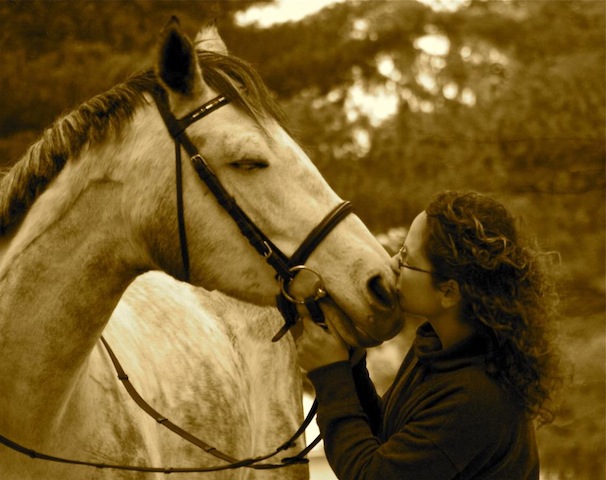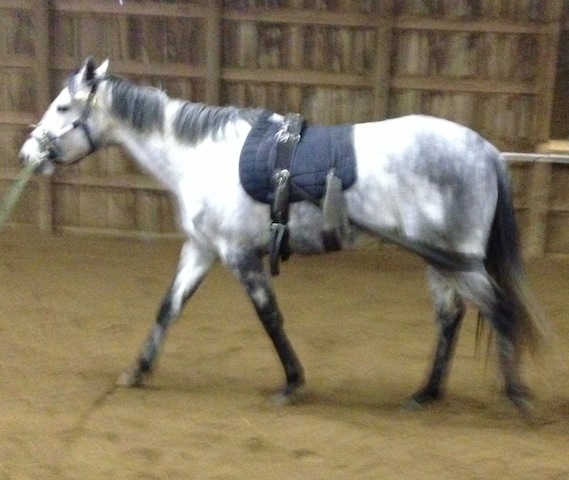Three weeks after a New York veterinarian performed pioneering surgery to correct Kissing Spine in a beautiful gray ex-racehorse Thoroughbred, the recovery process continues without a hitch, as the mare starts physical therapy.
Sue Swart, president of the New York chapter of ReRun, Inc., and who is supervising the post-op recovery of ex-racehorse Heartly Smart, reports that the mare has begun a regimen of physical therapy exercise to strengthen her back and hind quarters.
This week, the mare agreeably accepted the presence of Thera-bands, stretchy, rubber bands, similar to those used in human physical therapy, to begin resistance training.
Bands were looped around her hindquarters so that her legs would encounter resistance, and help buildup her hind end, and around her middle, so the mare would be forced to exercise her back, Swart explains.
“We are in the beginning stages of developing and strengthening her back,” says Swart, who adds, “And so far, the mare’s response to the bands is that she couldn’t care less about them.”
Agreeable to everything that has been thrown at her, Heartly Smart has been working with the bands during walk/trot sessions lasting 8- to- 15 minutes.
Prior to physical therapy, Swart applies heat to the site of the minimally invasive surgery, and after which, ice is applied.
The aim is that in six weeks, when radiographs are taken of the region of the back previously affected by Kissing Spine, the debilitating condition will have been reversed by the surgery.
On Feb. 18, Dr. Christy Cable, DVM, DACVS, performed a novel procedure on Heartly Smart, which had recently been performed by veterinarians in Europe. After Cable studied the peer-review paper on surgeries done to 35 horses diagnosed with Kissing Spine, and discovered that 95 percent of the equine patients recovered, she was eager to try the procedure, she says in an earlier interview with OffTrackThoroughbreds.com.
The surgery on Heartly Smart went as follows:
Radiographs of the mare’s spine were taken, and four areas of Kissing Spine identified and marked with metal tags. An ultrasound was also used to pinpoint the exact location of the “kissing” or touching spine.
After the mare was prepped and given mild sedation, similar to what is prescribed for a horse undergoing a dental procedure, incisions were made at the trouble spots, and an interspinous ligament desmotomy, or cutting of ligaments, was performed.
The theory behind the procedure, initially put forth by the British veterinarians, was that the small incisions cutting the ligaments would alleviate the pain, and possibly encourage space to open up between the spinal points, which had been touching, Cable explains.
Radiographs taken of the European horses six weeks after surgery indicate that indeed, this is what occurred, and that the Kissing syndrome was reversed, she added.
Up until now, the only option for Kissing Spine patients who resisted other treatments, was a major surgery that did not necessarily reverse the syndrome, she says in the previous interview.
The work done by Heartly Smart may be significant for all Thoroughbreds who suffer from the debilitating illness, she adds.
“If the surgery is a success, it will open doors” for horses and owners facing the worst cases of Kissing Spine. “It’s very promising,” Cable says.
So while Heartly Smart’s daily walks may not look all that exciting in the You Tube video below, the baby steps might bring horse health many miles ahead.
OffTrackThoroughbreds.com will continue to follow the weekly progress made by Heartly Smart, the lovely gray mare who may wind up having an important and beneficial impact on horse health!





